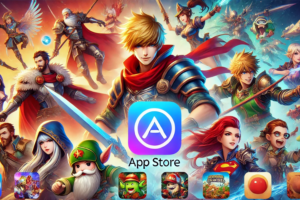Introduction
Have you ever noticed the “Parental Advisory” label while searching for games online? You’re not alone! As digital content and gaming continue to grow, it’s essential to understand what these labels signify. This blog post will delve into the meaning of a parental advisory PNG game, its purpose, and its impact on gamers, particularly younger ones.
Let’s explore everything you need to know about the parental advisory PNG game.
What is a Parental Advisory PNG Game?
A parental advisory PNG game is one that features a “Parental Advisory” label, often displayed as a PNG image or icon. This label serves as a warning for parents and guardians, indicating that the game’s content may not be suitable for children or younger audiences.
Typically, the parental advisory label arises from the presence of graphic content, strong language, or mature themes in the game. This is particularly crucial, as gaming has become a widely enjoyed form of entertainment for people of all ages.
Why Does the Parental Advisory Label Matter?
The parental advisory label is more than just a caution; it’s a tool that enables parents to make informed decisions about the content their children engage with. Here’s why it’s significant:
- Protects children from inappropriate content: Some games feature violence, sexual themes, or other mature topics unsuitable for young players. The parental advisory label acts as a warning for parents to reconsider before allowing access or making a purchase.
- Empowers parental control: Parents can oversee and manage their children’s gaming experiences by paying attention to these advisory labels. Understanding the game’s content helps parents make decisions that align with their values.
- Informs gamers: Even older players may find it helpful to know what type of content to expect. Being aware of mature themes in a game can influence one’s gaming experience, setting appropriate expectations ahead of time.
The Rise of Digital Parental Advisory Labels
In today’s digital landscape, physical game covers have shifted to digital formats, with advisory labels commonly presented as PNG images. The parental advisory PNG game label is a compact, recognizable symbol that game distributors, developers, and retailers utilize to inform players.
These PNG files often appear in online game stores, promotional materials, or within the game interface itself. They serve as straightforward visual cues that quickly communicate the need for caution regarding younger players.
How Do Parental Advisory Labels Differ from ESRB Ratings?
While both parental advisory labels and ESRB (Entertainment Software Rating Board) ratings aim to inform consumers about game content, they have distinct purposes:
- ESRB ratings provide a detailed assessment of a game’s content, categorizing it into age-appropriate levels (e.g., E for Everyone, M for Mature). These ratings offer specifics about why a game received a particular rating, citing reasons such as “violence” or “strong language.”
- Parental advisory labels, however, serve as a general warning that alerts parents to potentially inappropriate material without offering detailed breakdowns. They focus more on the overall tone of the content rather than specifics.
Despite their differences, many games feature both an ESRB rating and a parental advisory label to give consumers a complete understanding.
What Types of Games Receive Parental Advisory Labels?
Not every game comes with a parental advisory label. Generally, games that contain the following types of content will be flagged:
- Violence: Games with graphic or excessive violence.
- Language: Games featuring strong or offensive language.
- Sexual Content: Games with sexual themes, nudity, or suggestive material.
- Drugs and Alcohol: Games that depict drug use or excessive alcohol consumption.
How to Identify a Parental Advisory PNG Game
Identifying a parental advisory PNG game is straightforward once you know what to look for. These labels usually appear as small, square icons on game covers, whether digital or physical. You can typically find them in the lower corners of game posters, websites, or even in the game’s menu while browsing online marketplaces like Steam, the PlayStation Store, or the Xbox Game Store.
These labels are generally black and white, featuring bold text that reads “Parental Advisory,” making them easily recognizable.
Protecting Your Kids in the Gaming World
If you’re a parent worried about your child’s exposure to inappropriate content, here are a few proactive steps you can take:
- Use parental controls: Many gaming platforms provide parental control settings that allow you to block or limit access to specific types of games based on their content.
- Review game content: Before buying a game, look for parental advisory labels, read reviews, and watch gameplay videos to ensure it’s appropriate for your child.
- Discuss game content: Engage in open conversations with your kids about the games they play and why certain content might not be suitable for them at their age.
- Set boundaries: Clearly communicate what kinds of games are acceptable in your home, and consistently enforce those rules.
Conclusion
Parental advisory PNG games play a crucial role in protecting younger players from inappropriate content. As gaming popularity continues to rise, these labels help parents stay informed and maintain control over what their children encounter.
By understanding the significance of the parental advisory label and its function, parents and gamers can make more informed choices and foster a safer gaming environment for everyone.
FAQs
- What is a parental advisory PNG?
A parental advisory PNG is an image file used to visually indicate a warning about potentially inappropriate content in a game, particularly for younger audiences. - Is the parental advisory label the same as an ESRB rating?
No, the ESRB provides a detailed age-appropriate rating system, while the parental advisory label serves as a broader warning regarding content suitability. - Can I still let my child play a game with a parental advisory label?
That decision is ultimately yours. The label is designed to assist in making informed choices about the game’s content, but it’s not a strict prohibition. - Where can I find parental advisory PNG images?
These images are typically displayed on digital game stores or promotional materials for games that include mature content. - Are there games that don’t need a parental advisory label?
Yes, many games intended for children or general audiences do not require a parental advisory label, especially if they lack mature themes.
Discover the latest news and updates on latimes!






Be First to Comment